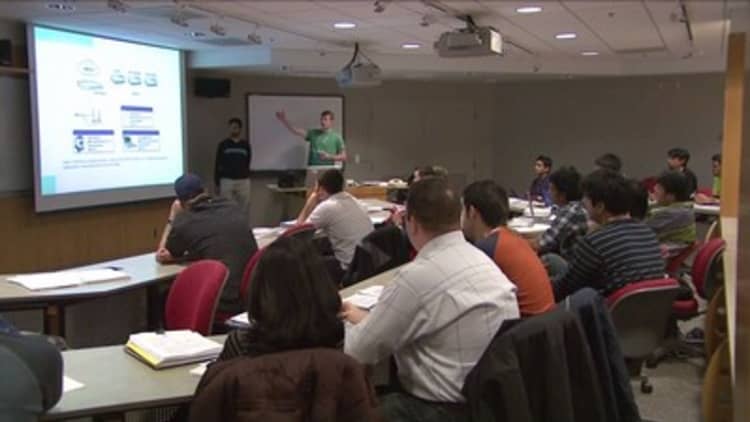Finding a college that offers both a quality education and reasonably priced tuition can be difficult.
To assist parents and students, a new college guidebook found 38 public and private universities that offer the best bang for your buck.
Parents and students are becoming increasingly cost-conscious, according to Edward Fiske, author of the "Fiske Guide to Colleges 2018." At the same time, parents know that if they're going to pour lots of money into higher education, they want the best education possible for their child, within their financial limits.
Years ago, a student who ended up in a school that was not a good fit for him, said it was like a four-year jail term with a $100,000 "fine." Now it might be a $350,000 fine, said Fiske, a former education editor for The New York Times.
Colleges must adapt because they are seeing fewer students who can afford the increasing costs, Fiske said. The average tuition for the 2016–2017 school year was $33,480 at private colleges and $24,930 for public universities, according to the College Board.
Fiske's best-buy colleges strive to maintain reasonable tuition costs. For example, Arizona State University sets its tuition to be accessible to as many students as possible. Tuition there for the 2017-18 school year is around $11,000 for in-state residents and $27,000 for out-of-state students.
Parents also are now more sophisticated about financial aid, scholarship opportunities and the college search process, Fiske said. He said the most important thing parents need to understand is that there is a difference between the tuition sticker price and what you're actually going to have to pay.
"Americans all know that when you walk into a car dealership, you stroll over and look at the sticker on the window, and then stick your hands in your pockets and say 'OK, well now how much is it going to cost me?' And so you have to do the same thing with colleges and universities," Fiske said.
The "net price" is the difference between the sticker price minus any gift aid (grants, scholarships and other money that does not need to be repaid), according to Mark Kantrowitz, a financial aid expert.
"If the difference in net price between two colleges is less than $1,000, usually the student ends up at the better quality college. If the difference in net price is more than $5,000, usually the student enrolls at the less expensive college," Kantrowitz said. "If the difference in net price is more than $1,000 but less than $5,000, the family agonizes over the decision."





